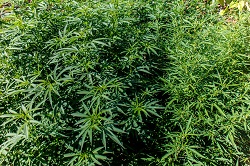Creating a better hemp plant
Hemp is a sustainable, high-yielding crop that is particularly well adapted for growing in European climates. Not only does it have the potential to bring numerous environmental, agronomical and economic benefits, it can also be used to produce a range of biomaterials that would contribute to the growth of Europe’s overall bioeconomy – everything from fibres to seeds and even cosmetics and pharmaceutical products. With all these advantages, it would seem a no brainer to promote the agricultural production of hemp. Yet surprisingly, in Europe hemp remains a minor crop and the hemp industry struggles to expand its acreage. ‘Although hemp was once a key industrial crop for fibre, hemp production disappeared over the last century in favour of cotton and synthetic fibres,’ explains Stefano Amaducci, project leader for the EU-funded MULTIHEMP(opens in new window) project. To change this, the project uses a cutting-edge genomic approach to achieve rapid, targeted improvements in hemp productivity and the quality of raw material. At the same time, it is working to advance the scientific understanding of gene-to-trait relationships in the crop. ‘By combining this genetic work with innovations in agronomy, harvesting and processing methods, we have generated sustainable products from improved hemp varieties,’ adds Amaducci. A renewed interest As Europe continues to look for new ways to mitigate the challenges of a changing climate, the need for more sustainable plant-based biomaterials has taken centre stage. For example, although most of our clothes and many other products are made from cotton, the cotton plant itself is an environmental disaster. As cotton fell from grace, a new solution was needed and, according to MULTIHEMP researchers, that solution is hemp. ‘There is a renewed interest in hemp because it requires less water and chemicals to grow, and it provides a superior quality of fibre and oil than what can be derived from other plants,’ says Amaducci. ‘What we are doing is essentially taking an already good crop and turning it into a really great crop.’ Hemp-based bio-refinery The project’s focus is on a natural, bio-refinery hemp plant that can combine the production of superior food (high quality proteins and oil) with a wide array of sustainable bio-materials. New hemp varieties are being developed to feed an innovative hemp bio-refinery where the value of each part of the plant is exploited. At harvesting, the stem and seeds are separated and the threshing residue is collected to recover valuable secondary metabolites. The stem is then separated, with the short fibre used for producing an innovative flock insulation system and the long fibre for high value bio-composites. ‘We’re even analysing the dust produced during the decortication of the stems for possible industrial applications,’ says Amaducci. Big benefits Although still a work in progress (the project is due to end in February 2017), MULTIHEMP’s natural bio-refinery hemp plant looks set to produce numerous benefits – both economic and environmental. For example, the project is supporting the release of new varieties suitable for multipurpose applications of the plant. Furthermore, the knowledge generated during agronomic and physiological research will be useful in fine tuning the cultivation techniques and choosing the most appropriate variety for a specific environment and end use.







